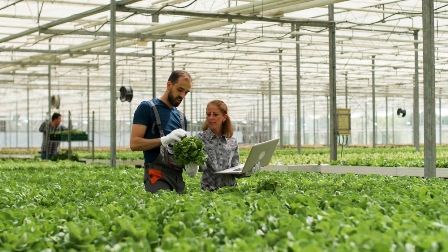Last updated: June 2025
How Farm Sheds Support Efficient Agricultural Operations in Australia
In the vast and varied landscapes of Australian agriculture, farm sheds play a crucial role in maintaining efficient, productive operations. From the scorching heat of the Outback to the humid coastal regions, these versatile structures provide essential protection for equipment, livestock, and produce. A well-designed farm shed isn’t just a storage space – it’s an investment that can dramatically improve workflow, protect valuable assets, and ultimately boost your bottom line. Whether you’re managing a small hobby farm or a large commercial operation, understanding how to maximise your farm shed’s potential can make all the difference in your day-to-day operations.
Table of Contents
- The Critical Role of Farm Sheds in Modern Agriculture
- Comprehensive Benefits of Quality Farm Sheds
- Types of Farm Sheds & Their Specialised Uses
- Essential Design Features for Maximum Efficiency
- A Step-by-Step Guide to Choosing Your Perfect Farm Shed
- Pro Maintenance Tips to Extend Your Shed’s Lifespan
- Real-Life Examples: Farm Sheds Transforming Australian Farms
- Farm Shed FAQ: Answers to Common Questions
The Critical Role of Farm Sheds in Modern Agriculture
Australia’s agricultural sector faces unique challenges that make farm sheds indispensable. Our climate extremes – from drought conditions to tropical storms – can wreak havoc on unprotected equipment and livestock. A well-positioned farm shed acts as your first line of defense against:
- Weather Damage: UV radiation degrades machinery surfaces and tires, while rain promotes rust and electrical issues.
- Feed Spoilage: Hay and grain stored improperly can develop mould or be contaminated by pests.
- Animal Stress: Livestock without adequate shelter experience heat stress, reducing productivity and health.
- Operational Delays: Equipment breakdowns from weather exposure can cripple critical farming timelines.
Beyond protection, modern farm sheds are designed to enhance workflow efficiency. Strategic placement near working areas reduces time wasted transporting tools or moving animals. The right layout can create logical work zones for different tasks, from equipment maintenance to produce sorting.
Comprehensive Benefits of Quality Farm Sheds
While the protective function of farm sheds is obvious, the full range of benefits extends much further:
Financial Advantages
- Asset Protection: A $200,000 harvester deserves a proper home – shed storage can extend equipment life by 5-10 years.
- Insurance Benefits: Many insurers offer lower premiums for protected equipment and stored produce.
- Tax Deductions: Farm sheds typically qualify as tax-deductible infrastructure improvements.
Operational Improvements
- All-Weather Workspace: Continue maintenance and repairs regardless of outdoor conditions.
- Organisation: Dedicated spaces for tools and parts reduce time spent searching.
- Versatility: Many farmers adapt shed space seasonally – shearing shed becomes machinery storage in off-season.
Agricultural Productivity
- Feed Efficiency: Properly stored hay maintains higher nutritional value.
- Animal Health: Shelter reduces stress, improving growth rates and reproduction success.
- Crop Protection: Sheds for produce sorting and storage maintain product quality for market.
Types of Farm Sheds & Their Specialised Uses
Understanding the different shed types ensures you get the right structure for your specific needs:
1. Machinery Storage Sheds
These heavy-duty structures are the workhorses of farm sheds, designed to protect your most valuable equipment:
- Clear Span Designs: No internal columns means easy maneuvering of large equipment.
- High Doors: Accommodate tall machinery like spray rigs with 5+ metre door heights.
- Concrete Floors: Essential for heavy loads and easy cleaning.
- Extra Features: Consider workbenches, tool storage, and power outlets for maintenance areas.
2. Hay and Feed Storage Sheds
Proper feed storage directly impacts livestock nutrition and farm economics:
- Ventilation Systems: Prevent condensation and mould growth in humid regions.
- Rodent Proofing: Metal cladding extending below floor level deters pests.
- Access Design: Wide openings facilitate easy loading/unloading with front-end loaders.
- Fire Safety: Electrical installations should meet special standards for combustible materials.
3. Livestock Shelters
Animal welfare standards and productivity both benefit from proper shelter:
- Open-Sided Designs: Allow airflow while providing shade and rain protection.
- Durable Materials: Steel framing withstands animal contact better than wood.
- Flooring Options: Concrete for dairy sheds, compacted gravel for beef cattle.
- Feeding Integration: Built-in feed bunks or hay racks streamline daily routines.
4. Specialised Agricultural Sheds
Many farms benefit from custom structures:
- Shearing Sheds: With specific layouts for efficient wool handling.
- Produce Packing Sheds: Designed for food safety with washable surfaces.
- Chemical Storage: Compliant sheds for dangerous goods with spill containment.
Essential Design Features for Maximum Efficiency
Thoughtful design transforms a basic shed into a productivity powerhouse:
Orientation and Placement
- Position doors away from prevailing winds to reduce dust and rain ingress.
- Consider sun angles – north-facing roofs in southern Australia maximise solar potential.
- Ensure adequate space around the shed for vehicle maneuvering.
Structural Considerations
- Wind ratings must match your region’s requirements – cyclonic areas need special engineering.
- Snow loads matter in alpine regions – steeper roof pitches shed snow better.
- Future expansion – design footings and structure to allow easy extension.
Practical Features
- Skylights or translucent roof panels reduce lighting costs.
- Gutter and rainwater tank systems turn your shed into a water catchment.
- Insulation pays dividends in both hot and cold climates.
A Step-by-Step Guide to Choosing Your Perfect Farm Shed
Follow this systematic approach to ensure you get the ideal shed for your operation:
1. Assess Your Needs
- Inventory all items needing storage (include future acquisitions)
- Consider workflow – how will the shed integrate with daily operations?
- Identify any special requirements (chemical storage, livestock handling etc.)
2. Select the Right Size
A common mistake is building too small. Consider:
- Not just floor area, but height clearance for equipment
- Space for movement around stored items
- Future expansion needs
3. Choose Materials Wisely
Compare options for:
| Material | Pros | Cons |
|---|---|---|
| Colorbond Steel | Durable, low maintenance, fire resistant | Can be noisy in rain, conducts heat |
| Insulated Panels | Temperature control, quieter | Higher initial cost |
| Timber Frame | Natural look, good insulation | Maintenance intensive, fire risk |
4. Customise for Your Operation
Consider adding:
- Mezzanine floors for additional storage
- Specialist doors (roller, sliding, or bi-fold)
- Power and lighting installations
- Security features for valuable equipment
Pro Maintenance Tips to Extend Your Shed’s Lifespan
A well-maintained farm shed can last decades. Follow this checklist:
Monthly Checks
- Inspect roof and wall cladding for damage or loose fasteners
- Clear gutters and downpipes
- Check door mechanisms for smooth operation
Annual Maintenance
- Inspect and touch up any paint chips to prevent rust
- Check structural bolts and tighten if necessary
- Clean skylights or windows for maximum light
5-Year Major Checks
- Professional inspection of structural integrity
- Consider recoating steel surfaces if showing wear
- Update electrical systems if needed
Real-Life Examples: Farm Sheds Transforming Australian Farms
Case Study 1: Broadacre Cropping Operation, WA Wheatbelt
A 5,000-hectare wheat farm invested in a 30m x 20m machinery shed with:
- 4.5m high clearance for large headers
- Concrete workshop area with hoist
- Solar panels on north-facing roof
Results: Reduced machinery maintenance costs by 35% and allowed off-season equipment overhauls that improved harvest efficiency.
Case Study 2: Dairy Farm, South Gippsland
A 400-cow dairy installed a feed storage and handling shed featuring:
- Ventilated grain storage bins
- Covered feed-out area
- Rainwater collection system
Results: Feed quality improved, reducing veterinary costs by 20% and increasing milk production by 8%.
Farm Shed FAQ: Answers to Common Questions
Q: What’s the typical lifespan of a quality farm shed?
A: A well-built steel farm shed should last 30-50 years with proper maintenance. The Colorbond steel warranty typically covers 20 years against corrosion, but the structural frame often lasts much longer.
Q: How do I prepare my site for a new farm shed?
A: Proper site preparation includes:
- Clearing and leveling the area
- Ensuring good drainage away from the shed
- Compacting the base material
- Installing appropriate footings (varies by soil type)
Q: Are there regulations about where I can build a farm shed?
A: Regulations vary by state and local council, but common considerations include:
- Distance from boundaries and waterways
- Bushfire-prone area requirements
- Heritage or environmental restrictions
- Size thresholds requiring development approval
Q: What’s the cost difference between a kit shed and custom design?
A: Kit sheds typically cost 20-40% less than fully custom designs, but offer less flexibility. For standard applications (general machinery storage, basic livestock shelter), kits often work well. Complex sites or specialised uses usually warrant custom engineering.
Q: How can I make my farm shed more environmentally friendly?
A: Several green options exist:
- Install solar panels on the roof
- Set up rainwater collection from the roof
- Use skylights to reduce lighting needs
- Choose recycled materials where possible
- Insulate to reduce temperature control needs
Final Thoughts: Your Farm Shed as a Productivity Hub
A well-planned farm shed is much more than four walls and a roof – it’s an integral component of your farm’s operational efficiency. The right shed protects your valuable assets, streamlines daily workflows, and can even generate additional income through improved productivity. While the upfront investment may seem significant, the long-term benefits in equipment longevity, operational efficiency, and peace of mind make farm sheds one of the smartest investments a farmer can make.




